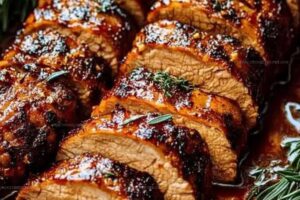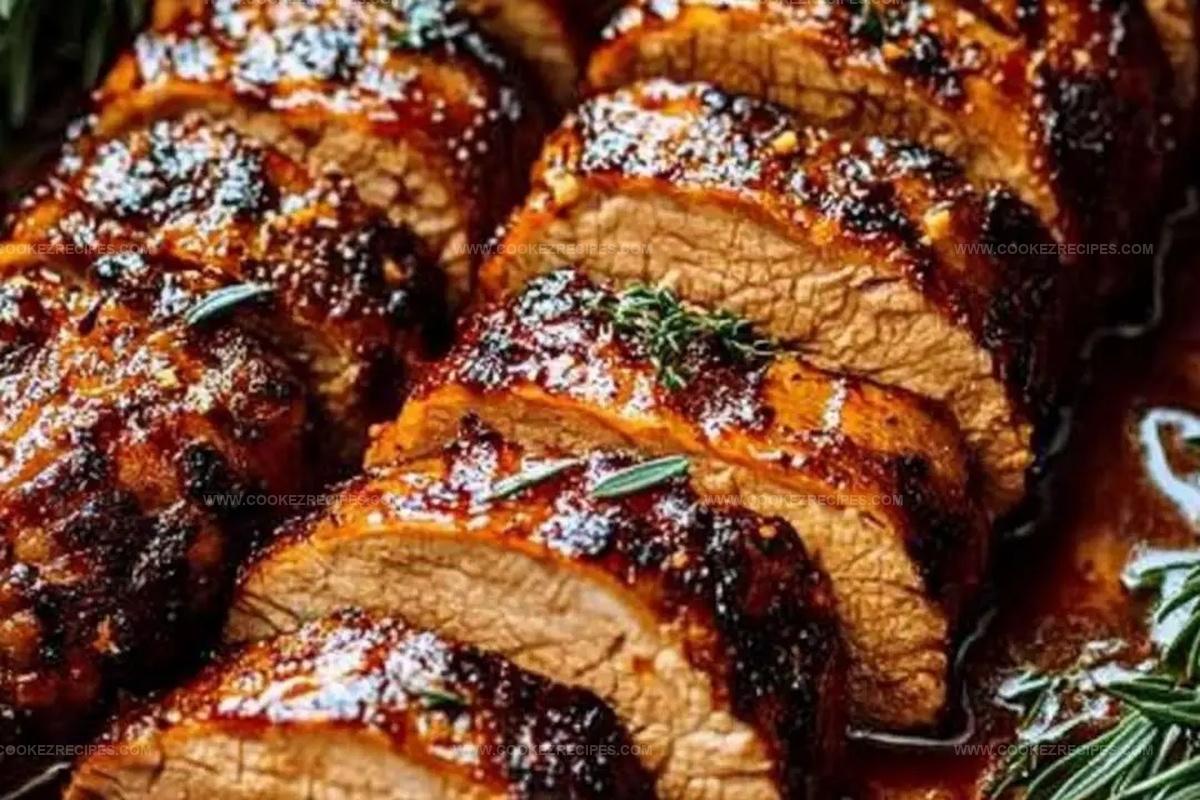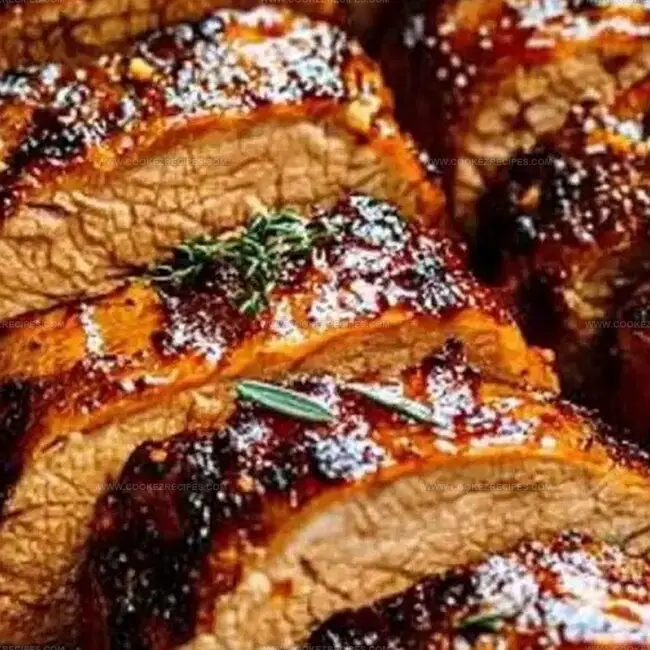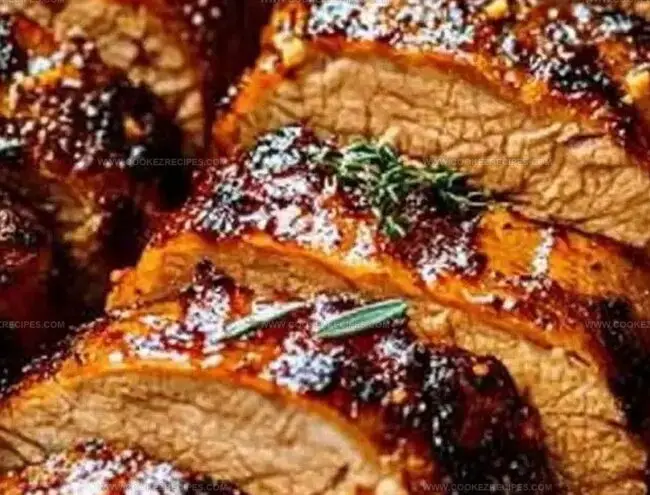Pork Tenderloin Roast Recipe That’s Tender and Flavorful
Mastering a succulent pork tenderloin roast can elevate your culinary skills from ordinary to extraordinary.
Cooking meat perfectly requires attention to detail and a dash of passion.
Lean and elegant, this cut promises a delightful dinner experience that impresses without complexity.
Salt and herbs play crucial roles in developing deep, rich flavors throughout the roast.
Marinating techniques ensure each bite remains moist and packed with savory goodness.
Simple techniques can help you achieve restaurant-quality results right in your kitchen.
Come join me in creating a memorable meal that will have everyone asking for seconds.
What’s Great About Juicy Pork Tenderloin Roast
Pork Tenderloin Roast Grocery List
Meat:Seasoning and Herbs:Flavor Enhancers:Pork Tenderloin Roast Cooking Method
Step 1: Warm Up the Oven
Crank your oven to a toasty 400°F (200°C).
Shield a baking sheet with aluminum foil to make cleanup a breeze.
Step 2: Prep the Meat
Gently blot the pork tenderloins with paper towels.
Carefully slice away any silvery membrane clinging to the surface.
Step 3: Create Flavor Magic
Blend together:Massage this aromatic mixture all over the pork.
For an extra flavor punch, slather on some Dijon mustard.
Step 4: Sizzle and Brown
Heat olive oil in a heavy skillet over medium-high heat.
Dance the tenderloins around the pan, creating a stunning golden crust.
Aim for 2-3 minutes on each side.
Step 5: Roast to Perfection
Slide the seared meat onto the foil-lined baking sheet.
Dot with small butter nuggets.
Roast in the oven for 15-20 minutes until the internal temperature hits 145°F (63°C).
Step 6: Rest and Slice
Rescue the tenderloins from the oven.
Let them relax for 5 minutes, allowing juices to redistribute.
Slice against the grain and serve piping hot.
Pork Tenderloin Roast Tenderness Tricks
Storing Juicy Pork Tenderloin Without Drying
Sides That Fit Pork Tenderloin Roast
Pork Tenderloin Roast Done Differently
FAQs
Searing helps lock in the juices and creates a delicious golden-brown crust that adds extra flavor and texture to the pork tenderloin.
Use a meat thermometer to check that the internal temperature reaches 145°F (63°C). This ensures the pork is safely cooked while remaining juicy and tender.
Yes, you can substitute dried herbs. Use about one-third the amount of dried herbs compared to fresh herbs, as dried herbs have a more concentrated flavor.
Pork tenderloin is a lean, tender cut of meat from the muscle running along the backbone. It’s much more tender and cooks faster than other pork cuts like pork loin or pork roast.
Print
Juicy and Tender Pork Tenderloin Roast Recipe
- Total Time: 30 minutes
- Yield: 4 1x
Description
Succulent Herb-Crusted Pork Tenderloin Roast promises a delightful culinary adventure through Mediterranean flavors. Fragrant rosemary, garlic, and olive oil create a mouthwatering centerpiece that will satisfy your dinner cravings with effortless elegance.
Ingredients
Main Protein:
- 2 pork tenderloins (about 1 lb/454 g each)
Herbs and Spices:
- 1 teaspoon paprika
- 1 teaspoon dried thyme
- 1 teaspoon dried rosemary
- 1/2 teaspoon onion powder
- 1/2 teaspoon salt (or to taste)
- 1/2 teaspoon black pepper (or to taste)
Cooking and Flavor Enhancers:
- 2 tablespoons olive oil
- 3 garlic cloves, minced
- 1 tablespoon Dijon mustard (optional, for extra flavor)
- 2 tablespoons unsalted butter
Instructions
- Prepare your cooking workspace by lining a baking sheet with aluminum foil and heating the oven to 400°F (200°C).
- Gently cleanse the pork tenderloins, removing excess moisture with paper towels and carefully trimming away any silver membrane.
- Create a robust seasoning blend by combining olive oil, minced garlic, paprika, thyme, rosemary, onion powder, salt, and pepper. Generously massage this aromatic mixture into the meat’s surface.
- Optional: Enhance the flavor profile by brushing the tenderloins with Dijon mustard for an extra layer of complexity.
- Warm a skillet over medium-high heat with olive oil, then sear the tenderloins until they develop a golden-brown exterior, rotating to ensure even caramelization (approximately 2-3 minutes per side).
- Carefully transfer the seared meat to the prepared baking sheet, strategically placing small butter pats on top to promote moisture and richness.
- Roast the tenderloins in the preheated oven, monitoring the internal temperature until it reaches 145°F (63°C), typically requiring 15-20 minutes of cooking time.
- Allow the tenderloins to rest for 5 minutes after removing from the oven, which helps redistribute internal juices and ensures maximum tenderness.
- Slice the meat against the grain and serve immediately while warm, presenting a succulent and flavorful dish.
Notes
- Always pat the pork dry before seasoning to ensure a perfect golden-brown sear and prevent excess moisture.
- Avoid overcooking by using a meat thermometer to check the internal temperature, which prevents dry and tough meat.
- Let the meat rest after cooking to redistribute juices, guaranteeing a supremely tender and succulent result.
- Customize the herb blend to match your taste preferences or dietary needs, swapping out rosemary for oregano or adding smoked paprika for extra depth.
- Prep Time: 10 minutes
- Cook Time: 20 minutes
- Category: Dinner
- Method: Roasting
- Cuisine: American
Nutrition
- Serving Size: 4
- Calories: 374
- Sugar: 1 g
- Sodium: 470 mg
- Fat: 24 g
- Saturated Fat: 9 g
- Unsaturated Fat: 12 g
- Trans Fat: 0 g
- Carbohydrates: 2 g
- Fiber: 0 g
- Protein: 35 g
- Cholesterol: 110 mg




Katherine Pierce
Recipe Curator & Food Educator
Expertise
Education
Boston University Metropolitan College
Certificate Program in the Culinary Arts
Focus: French and international cuisine techniques, Hands-on culinary training with industry professionals, Food industry insights and operations
Katherine grew up believing every dish has a story. She studied the art of food at Boston University and explored the history behind it. She loves pulling easy recipes from every corner of the world and putting them at your fingertips.
When Katherine’s not writing or testing new flavors, she’s teaching cooking classes, baking colorful mooncakes, or dreaming up new ways to mix old favorites with new twists.